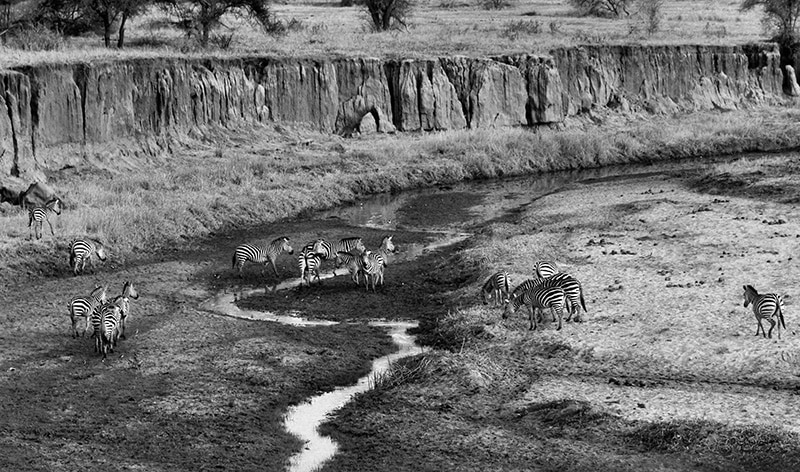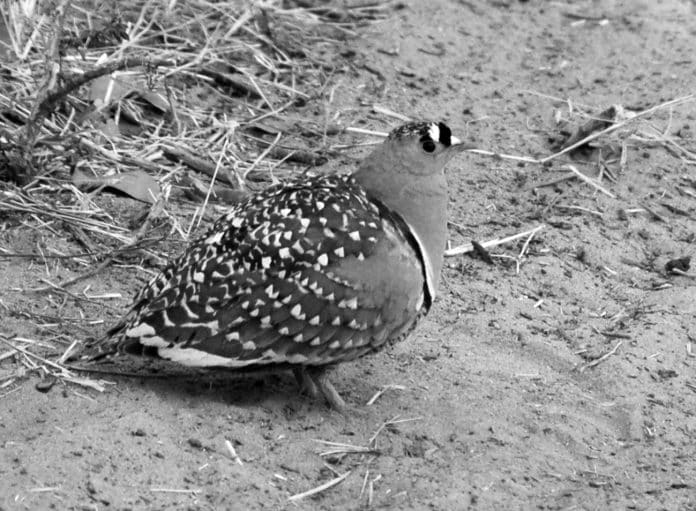The Sandgrouse: A Master of Heat Survival in Tanzania
Introduction to the sandgrouse in Tanzania
Tanzania, a country known for its diverse wildlife and rich ecosystems, is also home to the remarkable sandgrouse in Tanzania. These avian wonders have developed extraordinary adaptations to thrive in the scorching heat of the Tanzanian landscape. In this article, we will explore the habitat, physical characteristics, feeding habits, breeding behavior, threats, and conservation efforts surrounding the sandgrouse in Tanzania. Join us on this journey as we delve into the world of the sandgrouse and discover why it is considered a master of heat survival.
Habitat and distribution of the sandgrouse in Tanzania

The sandgrouse is primarily found in the arid and semi-arid regions of Tanzania, such as the Serengeti National Park and the Tarangire National Park. These habitats provide the perfect conditions for the sandgrouse, as they offer sparse vegetation and access to water sources. The sandgrouse is a nomadic species, constantly moving in search of food and water. This ability to adapt and survive in such harsh environments is a testament to the resilience of the sandgrouse.
Physical characteristics and adaptations of the sandgrouse for heat survival
The sandgrouse is a medium-sized bird with a plump body and short legs. Its plumage is predominantly sandy brown, allowing it to blend seamlessly with its surroundings. One of the most remarkable adaptations of the sandgrouse is its ability to collect and transport water to its young. The male sandgrouse has specialized feathers on its belly that can absorb water like a sponge. It then carries this water back to its chicks by squeezing the water out of its feathers. This extraordinary behavior ensures the survival of the sandgrouse offspring in the arid conditions of Tanzania.
Another adaptation of the sandgrouse is its ability to regulate body temperature. During the scorching heat of the day, the sandgrouse minimizes its activity to conserve energy and avoid overheating. It relies on its well-insulated plumage to protect itself from the sun’s rays. Additionally, the sandgrouse has the ability to increase its body temperature during the night, allowing it to conserve water by reducing evaporative loss.
Feeding habits and diet of the sandgrouse in Tanzania
The sandgrouse has a specialized diet that consists mainly of seeds and grains. It uses its sturdy beak to crack open the tough outer shells of seeds and extract the nutritious contents inside. The sandgrouse is also known for its ability to consume toxic plant seeds that are otherwise inedible to other bird species. This adaptation allows the sandgrouse to thrive in environments where food resources may be limited.
To obtain water, the sandgrouse relies on waterholes and other natural water sources. It has a unique way of drinking, known as “dipping.” The sandgrouse dips its belly feathers into the water and then sucks up the absorbed water, allowing it to carry it back to its nest and provide hydration to its young.
Breeding behavior and nesting habits of the sandgrouse
Breeding season for the sandgrouse in Tanzania typically occurs during the dry season when water sources are more abundant. Male sandgrouse attract females through elaborate courtship displays, which include inflating their chest feathers and performing aerial displays. Once a pair forms, they work together to build a nest on the ground, usually in a shallow depression lined with vegetation.
The female sandgrouse lays one or two eggs, which both parents take turns incubating. The eggs are well-camouflaged to blend in with the surrounding environment and are left unattended during the day to avoid drawing attention to the nest. After hatching, the chicks are precocial and can walk and feed themselves shortly after birth. They rely on their parents for protection and nourishment until they are independent.
Threats and conservation efforts for the sandgrouse in Tanzania
Despite its remarkable adaptations, the sandgrouse in Tanzania faces several threats to its survival. Habitat loss due to human activities, such as agriculture and infrastructure development, poses a significant risk to the sandgrouse population. Additionally, hunting and predation by larger predators, such as foxes and raptors, also impact their numbers.
To combat these threats, conservation organizations and the Tanzanian government have implemented various measures to protect the sandgrouse and its habitat. These include the establishment of protected areas, monitoring programs, and public awareness campaigns. By raising awareness about the importance of conserving the sandgrouse and its ecosystem, we can ensure the survival of this remarkable bird species for generations to come.
The role of the sandgrouse in the ecosystem of Tanzania
The sandgrouse plays a vital role in the ecosystem of Tanzania. As seed eaters, they contribute to seed dispersal, aiding in the regeneration of vegetation in arid regions. By consuming toxic plant seeds, they also help control the spread of these plants and maintain the balance of the ecosystem. Furthermore, as a prey species, the sandgrouse serves as a food source for larger predators, contributing to the overall biodiversity of Tanzania.
Wildlife tourism and the sandgrouse in Tanzania
Tanzania is renowned for its wildlife tourism, attracting visitors from around the world who wish to witness the diverse array of species in their natural habitats. The sandgrouse, with its unique adaptations and behaviors, is a fascinating bird to observe. Wildlife enthusiasts can embark on guided tours and safaris to witness the sandgrouse in action, learning about its survival strategies and ecological significance. By engaging in responsible wildlife tourism, visitors can contribute to the conservation efforts aimed at protecting the sandgrouse and its habitat.
Research and studies on the sandgrouse in Tanzania
Scientists and researchers have conducted extensive studies on the sandgrouse in Tanzania to better understand its behavior, ecology, and conservation needs. These studies involve tracking the movements of sandgrouse populations, monitoring breeding patterns, and investigating the impact of environmental factors on their survival. By gaining insights into the lives of sandgrouse, researchers can develop effective conservation strategies and contribute to the overall understanding of avian biology.
The sandgrouse in Tanzania is a true master of heat survival. Through its remarkable adaptations, it has managed to thrive in the challenging arid landscapes of the country. However, the sandgrouse’s existence is not without threats, and conservation efforts are crucial to ensure its continued survival. By appreciating the unique characteristics and ecological role of the sandgrouse, we can foster a deeper understanding and appreciation for the diverse wildlife that Tanzania has to offer. Let us all strive to protect and conserve this amazing bird species and the ecosystems it calls home.
For more articles related to Wildlife in Tanzania (Animals), click here!


































